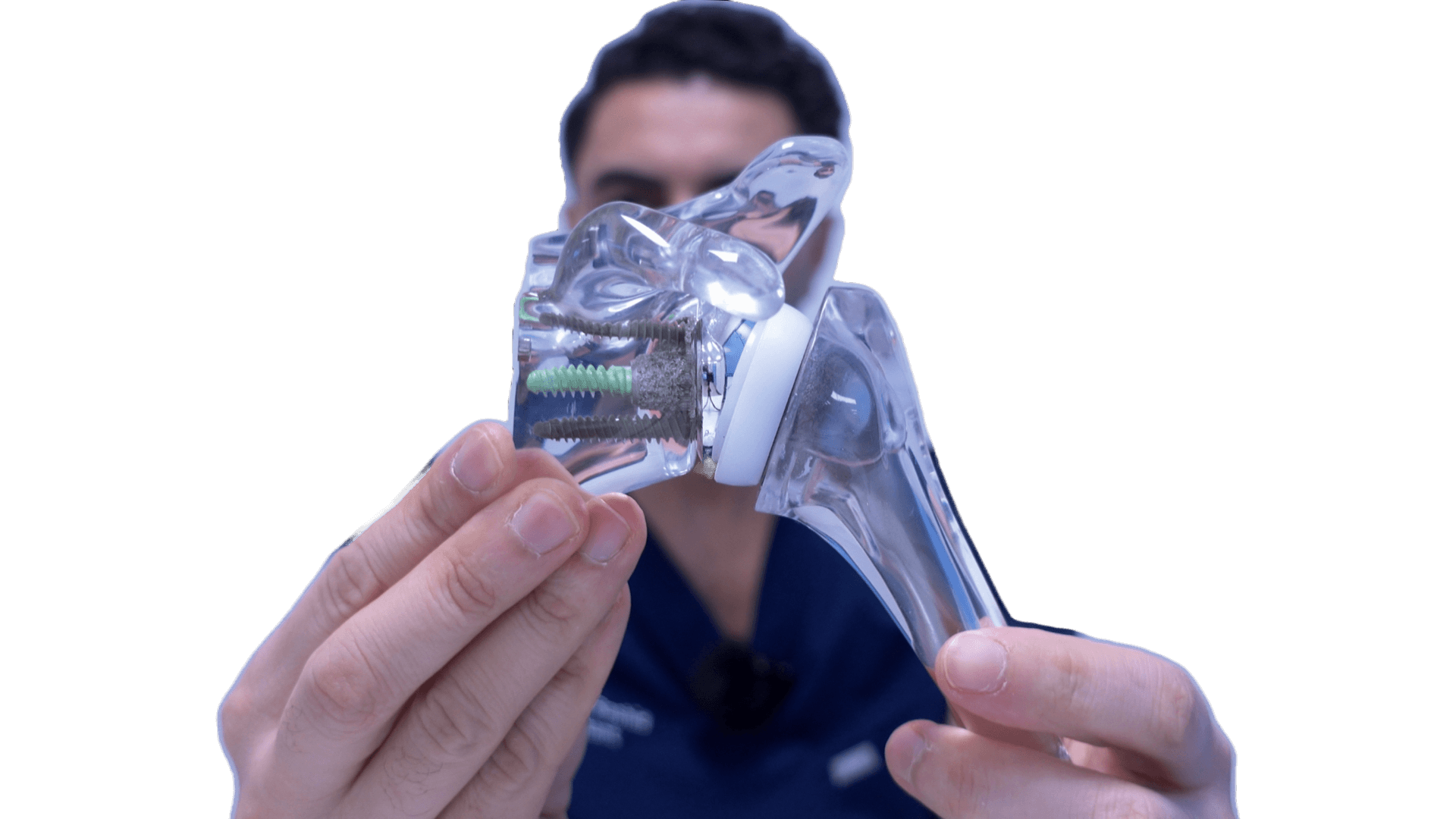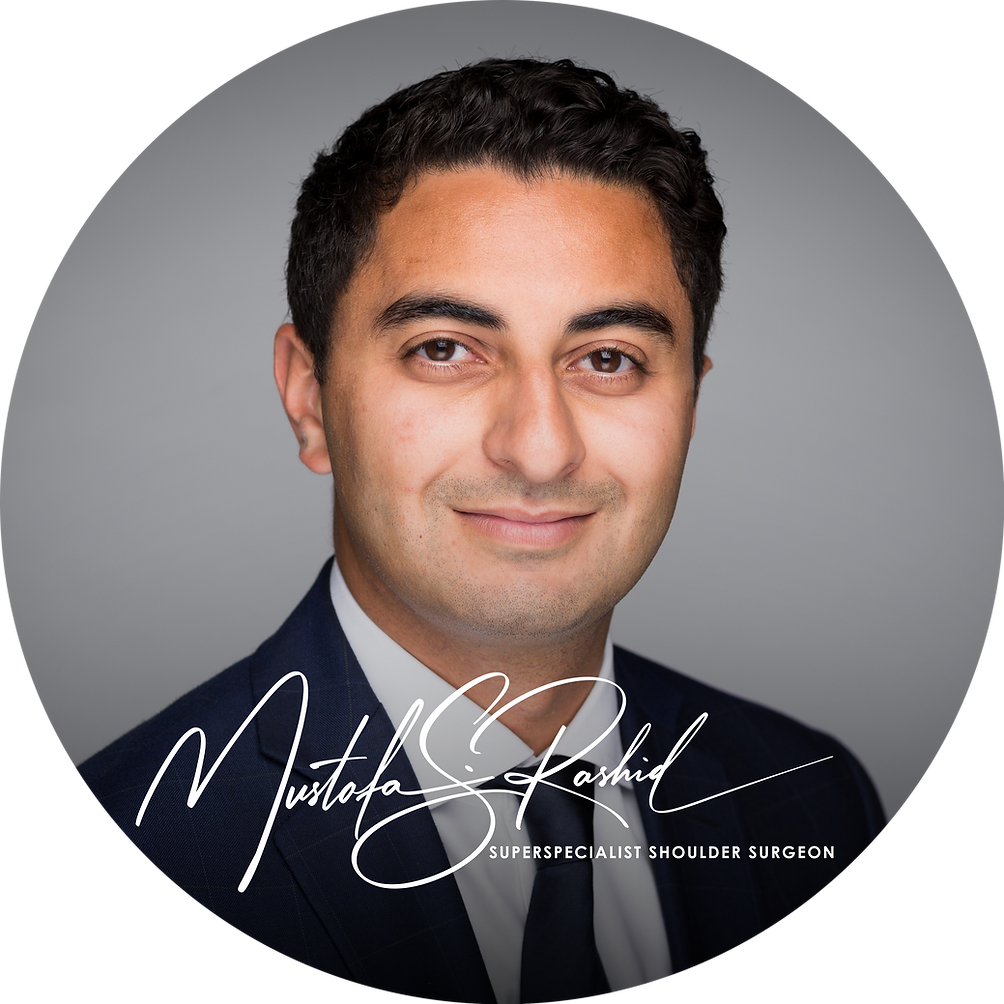Reverse Total Shoulder Replacement Surgery

Overview
Reverse shoulder replacement surgery is the most common type of shoulder replacement in the UK. Dr. Rashid has specialist expertise in performing all types of shoulder replacement, including complex and revision (re-do) reverse shoulder replacement surgery. In reverse shoulder replacement surgery, the ball of the shoulder is replaced with a socket, and the socket is replaced with an artificial ball. The reason for this is that this type of replacement does not require the rotator cuff muscles to be attached for the artificial shoulder to work.
Indications for surgery
The typical indications for this type of surgery is a type of arthritis where the rotator cuff tendons are torn, called rotator cuff arthritis. Other indications include severe wear on the socket that means the rotator cuff muscles may not work well with another type of replacement. Most revision (re-do) shoulder replacement operations are reverse shoulder replacements.
Pre-surgery tests and assessment
Before any shoulder replacement surgery, a variety of assessments and tests, such as X-rays, and a CT scan are performed. Dr. Rashid uses software to create a 3D model of your shoulder, and determines the correct size and type of implant that best fits your shoulder.
Procedure Details
Under general anaesthesia, you will be placed in a sat up position. Your forearm is placed in a special arm holder to hold your arm in the correct position. After sterilisation of your shoulder, a 10cm skin incision is made at the front of the shoulder. The front tendon, if it is still present, is then detached to allow access to the shoulder joint. The ball of the joint is removed using a saw. A titanium implant is inserted into the humerus (arm) bone and the artificial socket is implanted onto this. The socket is then prepared and an implant with screws is inserted. The artificial ball is then attached to this. The tendon is reattached and the new joint is put back together.
The skin incision is closed with stitches that are absorbable and buried under the skin. Dressings and a sling are then applied.
Risks and Complications
The risks of shoulder replacement surgery are not common. These include infection, loosening of the implants, a fracture around the implants, dislocation (usually after a fall) and nerve injury (very rare). No implants will last forever, and they all eventually loosen. Modern implants that Dr. Rashid utilises, are designed to last over 15 years.
Recovery and rehabilitation
Recovery following reverse shoulder replacement involves wearing your sling for 4 weeks, then slowly weaning off. Physiotherapy is helpful to ensure you regain your motion. Most people continue to improve for a year after surgery, although most of the improvement occurs in the first 6 months. Pain relief is often appreciated in the first month.
Expected Outcomes
Every patient has different goals from this type of surgery. Most people will be able to live their life, free of shoulder pain, and with a functional shoulder within 3 months. Most people are able to return to tennis, golf, swimming, weightlifting, and physical labour between 3 and 6 months after surgery. Dr. Rashid will follow your shoulder implant for many years to ensure it continues to work well over time. It is advised that you do not drive a vehicle whilst you are in the sling. Most people will be able to drive by 2 months after surgery.
About the Author

Mustafa Rashid
Dr. Mustafa Rashid is an award-winning, well published superspecialised surgeon from the UK, specialising in shoulders
